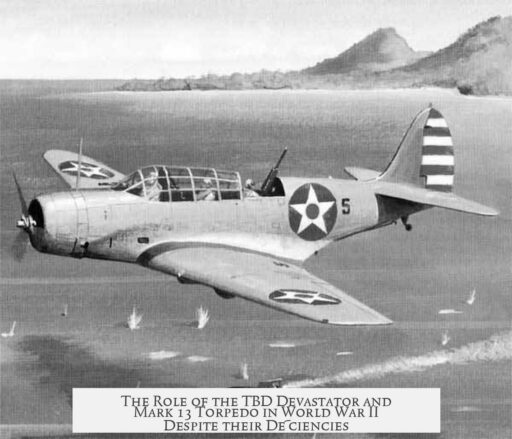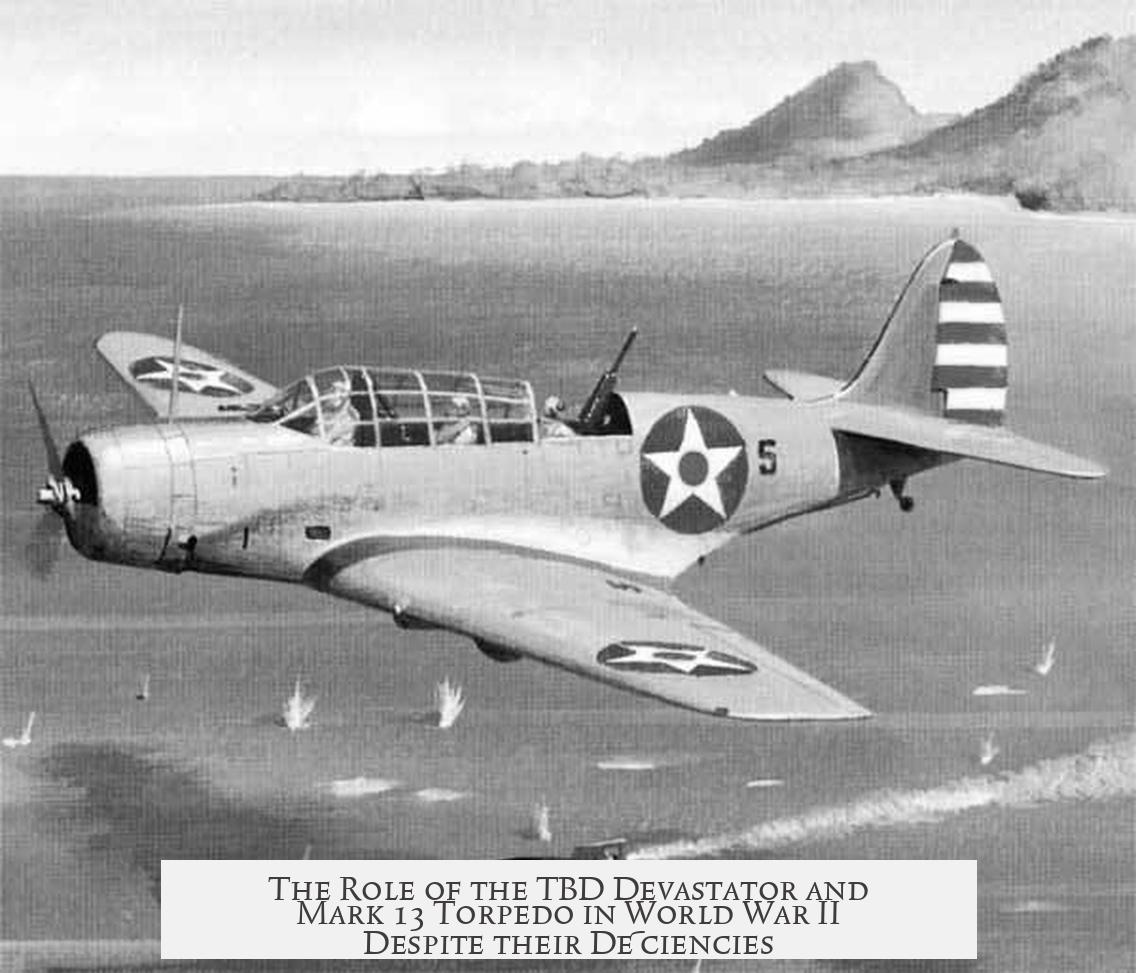The TBD Devastator aircraft and Mark 13 torpedo were used during World War II despite their known deficiencies because they represented the best available weapons system at the time, fulfilled essential tactical roles within naval aviation doctrine, and improvements were underway but not yet fully implemented.
Warfare requires the use of current resources rather than waiting for ideal technology. As Donald Rumsfeld noted, armies fight with what they have, not what they want. The U.S. Navy faced urgent operational needs with a limited inventory of torpedo bombers and torpedoes in early WWII. The TBD Devastator and Mark 13 torpedo were already deployed on aircraft carriers and formed a key element of the carrier air group composition.
American naval air doctrine prioritized a mixed composition of air squadrons on carriers to maximize attack effectiveness. Each air group typically included 18 fighters (F4F Wildcats), 36 dive bombers (SBD Dauntless, split between bombing and scouting roles), and 18 TBD Devastator torpedo bombers. Compare dive bombers’ greater payloads, effective against carriers and lighter ships, with torpedo bombers specialized to threaten heavy cruisers and battleships. The Devastator’s role was to provide a distinct attack vector to complement dive bombing.
Besides direct damage potential, torpedo bombers had tactical advantages. Carrier-based fighters (Combat Air Patrol or CAP) could not engage multiple attack vectors simultaneously. Torpedo bomber attacks forced enemy CAP division, diluting defenses and sometimes allowing dive bombers to strike effectively. For example, at the Battle of Midway, despite poor torpedo hit rates, torpedo attacks occupied Japanese fighters, contributing indirectly to the U.S. success.
Additionally, torpedo bombers could operate more effectively under overcast or poor visibility conditions due to their level flight attack runs. They also had utility in anti-submarine warfare, extending their effectiveness beyond carrier attack roles.
The primary cause of poor performance early in the war stemmed from lack of rigorous pre-war testing and inadequate operational training, not simply from design flaws. Navy planners favored dive bombers before the war, so the Mark 13 torpedo and TBD Devastator received insufficient active testing against realistic targets. Combat experience was limited to two early engagements—the Coral Sea and Midway battles—offering little opportunity to refine tactics or equipment within short intervals.
Initial torpedo attack methods decreased reliability. Pilots were trained to fly low and slow during torpedo delivery, causing the torpedo to impact at a shallow angle, leading to damage and malfunctions. Research by Caltech analysts revealed that flying higher (up to 800 feet) and faster (about 300 knots), with a torpedo entry angle of about 22–32 degrees, drastically improved torpedo functioning.
Engineering modifications followed these tactical insights. The Mark 13 torpedo was upgraded with drag rings and shroud rings to stabilize its flight path through the air, reduce impact shock, and improve accuracy. These changes, along with revised pilot procedures, transformed the torpedo’s combat effectiveness by 1944.
The TBD Devastator was acknowledged as obsolete early in the war. The Navy introduced the Grumman TBF Avenger as its replacement. The Avenger featured greater range, speed, payload capacity, and survivability, rapidly supplanting the Devastator on carriers across the Pacific theater.
| Aspect | Reason for Use Despite Deficiencies |
|---|---|
| Availability | Only torpedo bomber deployed on carriers at war’s start |
| Doctrine | Integral component of balanced carrier air groups for combined attacks |
| Tactical Role | Forced enemy fighters to split defenses; specialized attacks on large ships |
| Testing | Insufficient pre-war operational testing delayed problem identification |
| Improvement Efforts | Ongoing technical modifications and new aircraft introduction in mid-war |
In sum, the continued use of the TBD Devastator and Mark 13 torpedo through early WWII was a function of operational necessity, naval strategy, and the iterative process of adapting weapon systems during conflict. The U.S. Navy effectively leveraged these assets while rapidly improving them and transitioning to superior alternatives as soon as possible.
- Wartime urgency required immediate use of existing torpedo bombers and torpedoes.
- The TBD Devastator played a critical role in balanced air group attacks despite limited direct effectiveness.
- Poor performance mainly resulted from lack of testing and flawed delivery tactics.
- Caltech and Navy modifications improved torpedo reliability and attack procedures.
- The Grumman TBF Avenger replaced the Devastator as a superior torpedo bomber by 1943–44.




